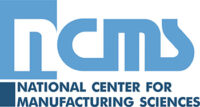CTMA Project #: 142013
Problem: Historically and in the world today, utilities, independent power producers and other industrial and commercial organizations use mobile energy storage (generators) to provide backup power to critical facilities such as hospitals, critical infrastructure and first responders during hurricanes, ice storms and other natural disasters. Maximizing the power and capacity without increasing the space and weight of the vehicle or trailer used for transporting the power generation equipment to the location it is needed is crucial. For use in storm prone or natural disaster areas, the units need to be agile but ruggedized in order to improve their lifecycle costs, reduce their operating costs, and provide a reliable source of power.
Benefit: This initiative will be a perfect trial run for industries that also rely on mobile power to conduct business remotely as well as emergency response units that must operate in remote and sometimes austere conditions. The ability to generate clean, sustainable power and then use this power in a mobile energy solution is crucial for both civilian and military applications.
Solution/Approach: In conjunction with a battery initiative concurrently being run at the U.S. Naval Research Laboratory (NRL), the project team will begin the development of an agile, mobile electric storage unit by coupling a “cart” of lithium ion batteries with an electric generator. Key aspects of the demonstration are modularity, reduced maintenance and supply chain logistic footprint, ruggedness, modularity and safety. The intent of this initiative is to create a Mobile Energy Storage System (MESS) that combines power generation with energy storage all in a package that can be easily and safely transported to a remote location and easily maintained while it is in that remote location.
Impact on Warfighter:
- Provide agile, flexible, ruggedized renewal power capabilities
- Ensure greater safety
- Improve unit mobility, speed, reliability and efficiency
- Increase warfighter readiness and lethality
DOD Participation:
- U.S. Navy
- Naval Research Laboratory (NRL)
- U.S. Marine Corps Systems Command (observer)
- U.S. Marine Corps, Capabilities Development Directorate, Expeditionary Energy Office (observer)
- U.S. Army Combat Capabilities Development Command, Ground Vehicle Systems Center
- Department of Navy Operational Energy Office
- Navy Battery Development and Safety Office (NAVSEA)
- Marine Corps Systems Command, Logistics Combat Element Systems
- Marine Corps Systems Command, Integration Division, Systems Engineering Directorate
Industry Participation:
- International Automated Systems (IAS)
- NCMS
Benefit Area(s):
- Cost savings
- Maintenance avoidance and reliability
- Positive environmental impact
- Safety
- Energy efficiency
Focus Area:
- Energy, environmental, health, and safety




